After reading there was going to be a Miner’s Day festival in a ghost town in New Mexico that I’d never heard of, I knew I had to put that on my calendar. So, on a warm August afternoon, I found myself arriving in White Oaks, New Mexico to explore the historic town, spend a Friday night at the No Scum Allowed Saloon, and enjoy the 3rd Annual White Oaks Miner’s Day.
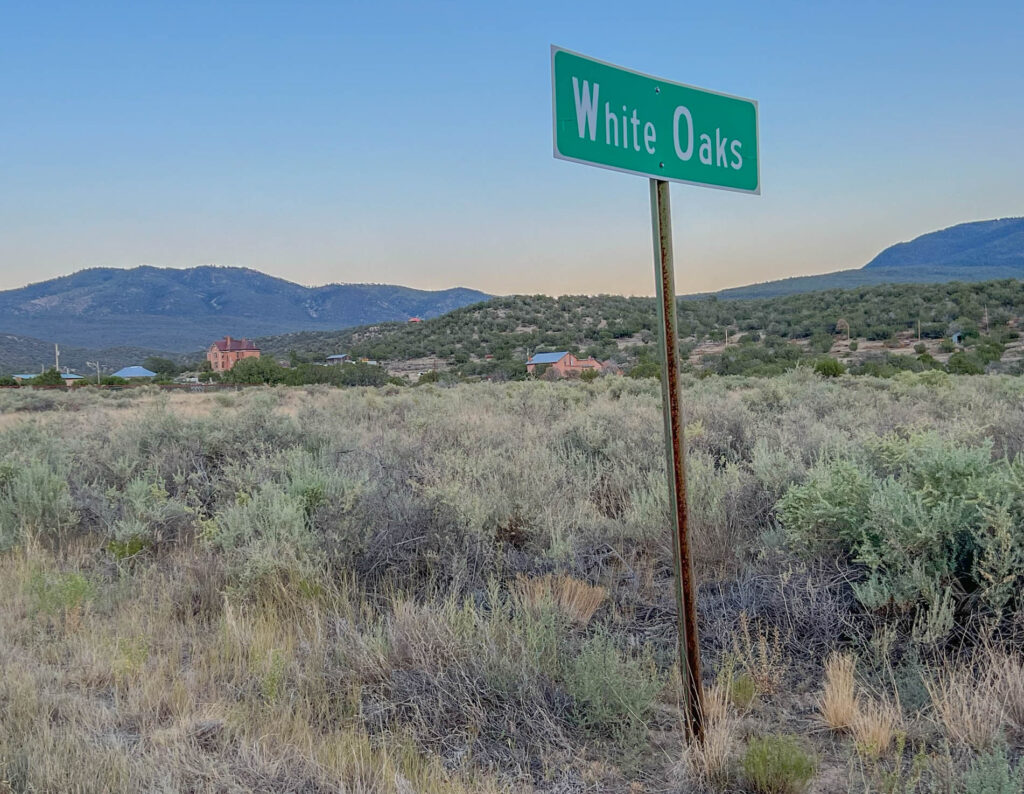
Table of Contents
History of White Oaks
The Gold Rush
Named after two nearby springs, White Oaks is a “ghost town” located about 15 minutes northeast of Carrizozo, New Mexico. I put “ghost town” in quotes since there are 15 people who proudly call White Oaks home today. Back in its heyday (in the late 1800s), White Oaks was home to around 2,500 people making it one of the largest cities in New Mexico at the time. The residents were primarily focused on one thing. Gold.
Around 1870, a California ’49er gold rusher named John J. Baxter arrived in White Oaks after hearing rumors of gold in the area. Through a fortuitous series of events, he ended up striking it rich. John eventually sold his claim for $300,000, which in 1890 was a massive amount of money … about the same as $10 million today.
The discovery of gold in White Oaks attracted all kinds of interesting characters. The town grew rapidly to support the miners with the typical frontier industries of taverns, gambling, and brothels. I’ve read that White Oaks was one of Billy the Kid’s favorite places to visit. The rapid growth was supported by the creation of a railroad terminal in nearby Carrizozo, which I featured in my last post. White Oaks residents wanted a railroad terminal located in their own town, but that never happened.
The Cattle Queen of New Mexico
One interesting character from White Oaks was Susan McSween Barber, known as the “Cattle Queen of New Mexico.” Originally from Gettysburg, Pennsylvania, Susan Hummer married a lawyer from Prince Edward Island (Canada) named Alexander McSween. Alexander had chronic asthma and the couple thought that a move to the southwest might help. During their journey to the southwest, a traveling companion suggested they check out Lincoln in New Mexico territory. And that’s what they did, arriving in White Oaks in 1875.
History buffs who’ve read about the Lincoln County War and Billy the Kid might recognize the name Alexander McSween. Alexander McSween was the lawyer who partnered with cattleman and banker, John Tunstall, to create a cattle ranching business that would serve as a rival to the corrupt cattle barons, Lawrence Murphy and James Dolan. This helped spark the Lincoln County War. John Tunstall happens to be the guy who hired a “cattle guard” named Henry McCarty, aka “Billy the Kid.” You can read more about the Lincoln County War and Billy the Kid in my post about Lincoln, New Mexico and the Billy the Kid Pageant.
Towards the end of the Lincoln County War, there was a shootout that took place from the McSween home between Billy the Kid (and other Tunstall-aligned fighters) and the hired killers from Murphy-Dolan. In the end, Alexander McSween was killed and Susan’s house was burned down. Left with nothing, Susan decided to fight back in a different way. With funds from her husband’s estate, she purchased land near Three Rivers and decided to get into cattle ranching by creating the Three Rivers Ranch. She single-handedly managed the construction of the ranch and oversaw the cowboys, masons, farm hands and carpenters who worked on-site. Susan eventually had over 5,000 cattle and she also prospected for silver on her property. Through these efforts, her reputation grew, earning her the nickname, “the Cattle Queen of New Mexico.” In 1915, Susan sold her ranch to Albert Bacon Fall, a politician who became infamous for his role in the Teapot Dome Scandal that I wrote about in my post about Carrizozo.

Once the gold ran out, the population of White Oaks plummeted. Many historical buildings still stand today, as well as the Cedarvale cemetery and the No Scum Allowed Saloon, which was listed (in 2011) as one of the top cowboy Bars in the West by American Cowboy magazine. Read on to learn more about the No Scum Allowed Saloon.
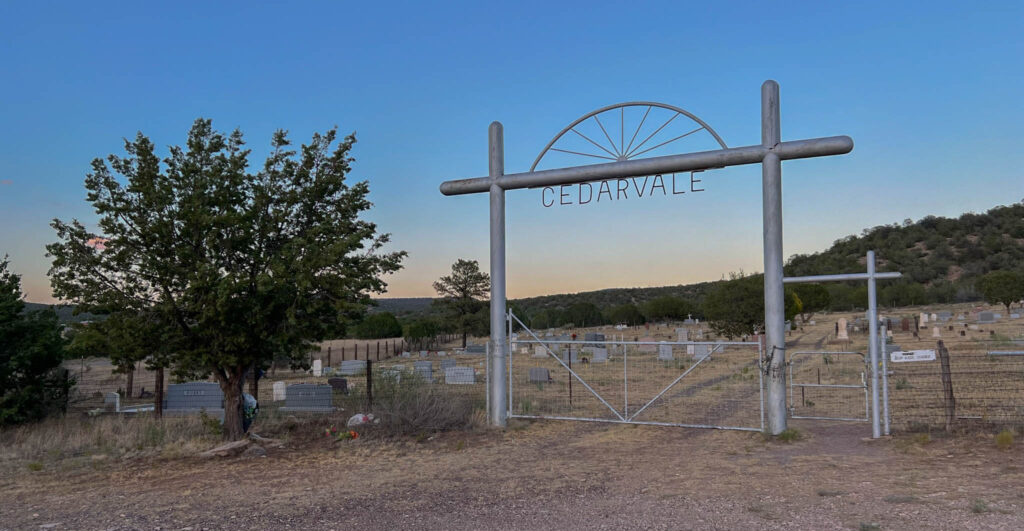
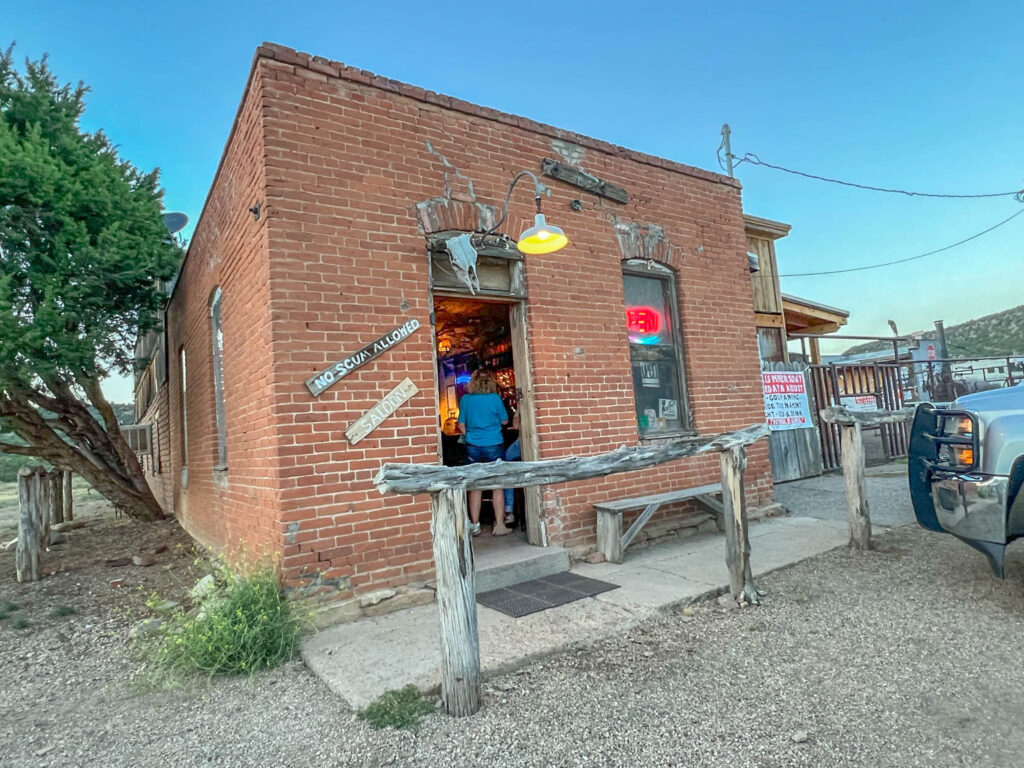
The No Scum Allowed Saloon
The No Scum Allowed Saloon building has worn many hats over the years. It started out as an attorney’s office in 1880. Then, it became a print shop that published one of the White Oaks newspapers. Eventually, it became a saloon. As late as the 1980s, the bar was run on an honor system where thirsty customers would locate a key stored under a rock, pour themselves a drink, leave money at the bar, lockup, and return the key to its hiding spot.
Today, the No Scum Allowed Saloon is particularly popular with bikers, which makes sense given that the saloon makes for a great stop while enjoying a scenic ride in the area.
With such a catchy name, I couldn’t resist seeing what it’s all about. So, on a Friday night (the day before Miner’s Day), I drove to White Oaks and walked in. The front part of the saloon is cozy, with plenty of fun things to look at on the walls – dollar bills, patches, and interesting posters.
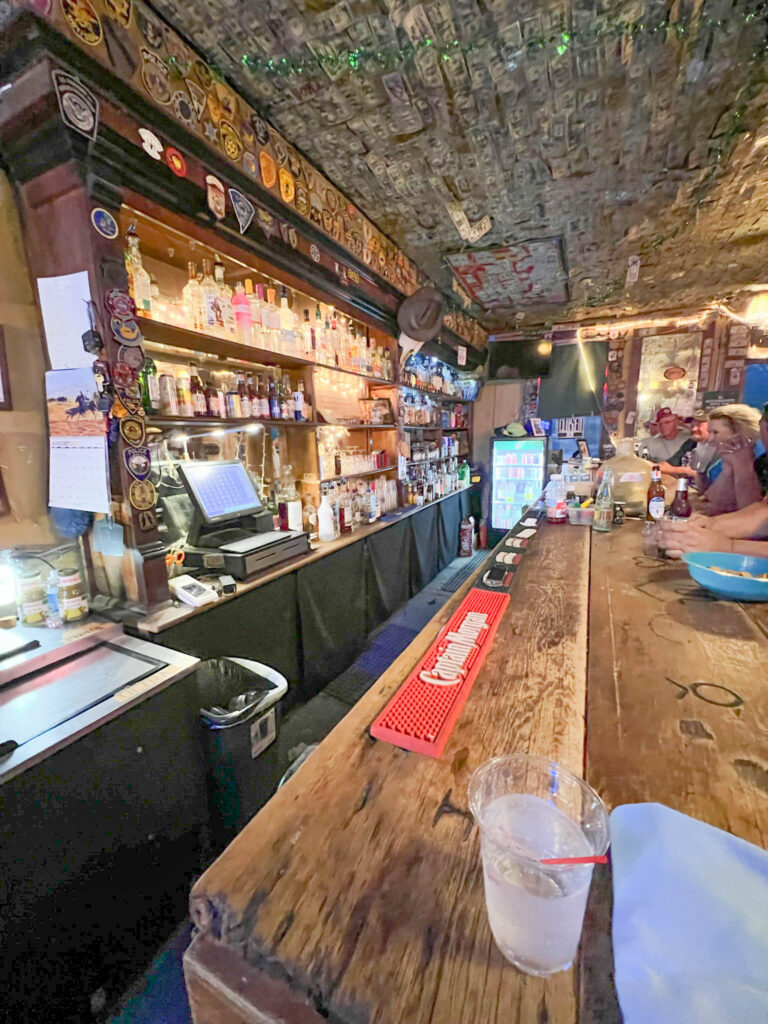
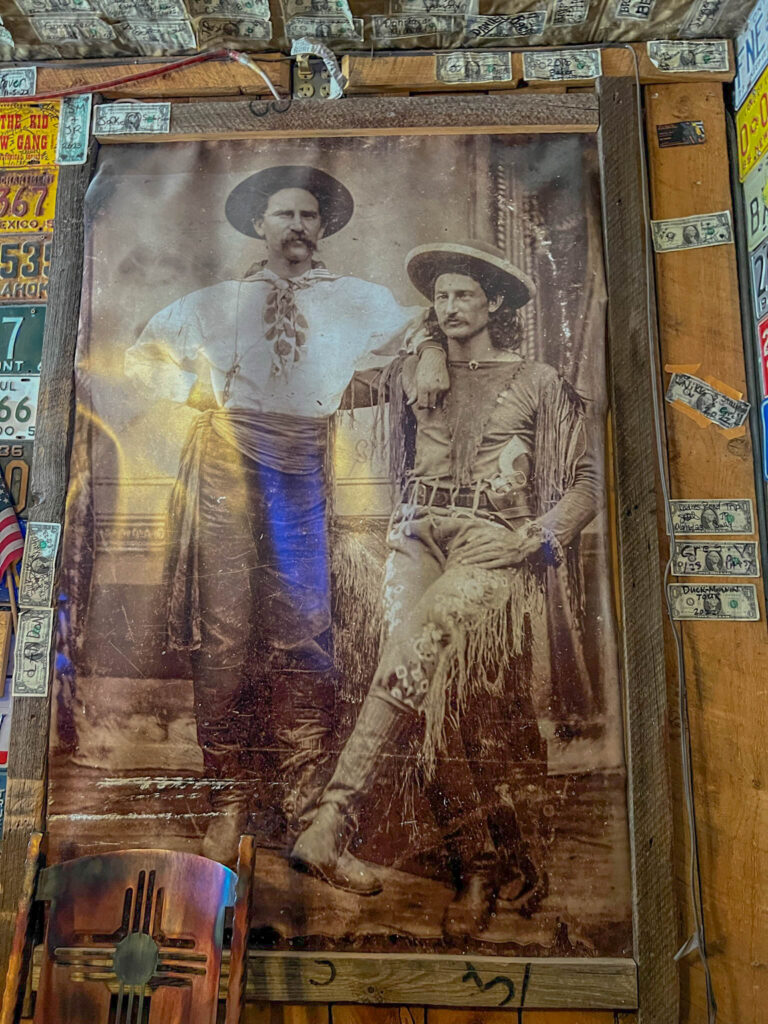
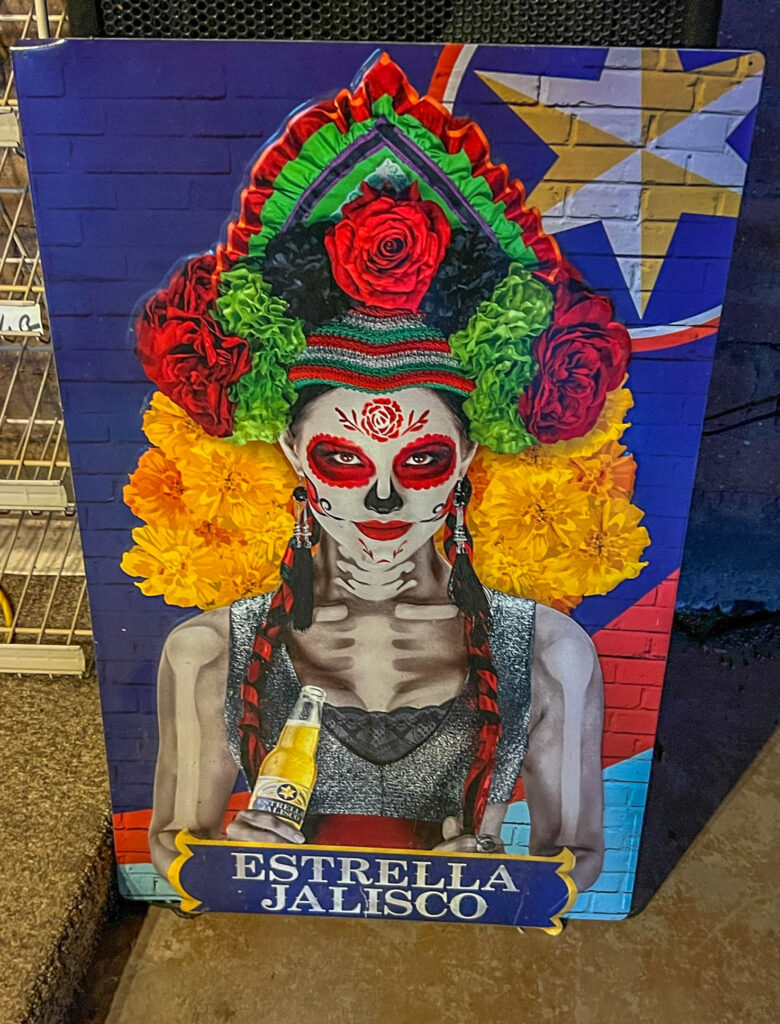
There were probably a dozen people there, and all of them seemed to be local. In a place like this, there’s no hope of trying to blend in as a local. Everybody knows everybody, except you. So, I stood at the bar and had some good conversations with the bartender and a few of the locals. They were all very friendly.
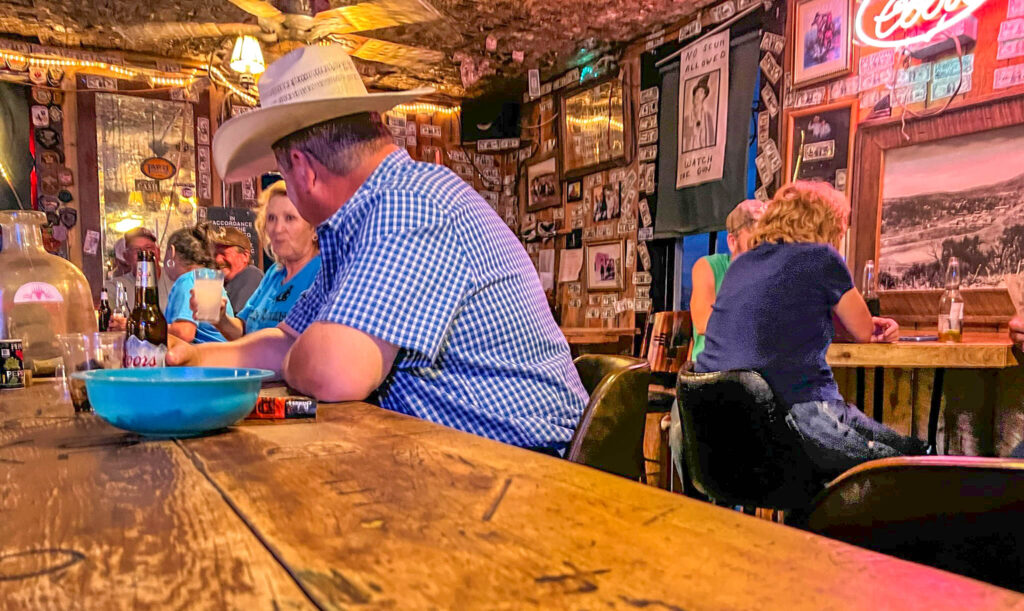
It turned out that the bartender, Karen, used to live in the small town where I live, Sandia Park. We had a laugh about that and traded some stories. Karen has been at the bar for about six years, and she seems to know everyone and everything about White Oaks. I also met Doug, a lead guitar player in a local band, who told me about a Cleveland Millfest in Cleveland, New Mexico that I should check out if it’s being held again. Noted! I also had a long conversation with Mital, who happens to own the motel in Carrizozo where I was staying. I wrote about Mital in my previous post about Carrizozo.
The saloon has a much bigger back room, and an even bigger outdoor area with additional seating, a cement dance floor, and an outdoor stage. I learned that the No Scum Allowed Saloon has live music on many Saturday nights from March – October. The place gets packed on nights when bands like local favorite, The Graham Brothers, perform classic country dance tunes. These live music nights attract visitors from as far away as Santa Fe and El Paso. I plan to stop by sometime in 2024 to see the Graham Brothers play and test out my limited country two-step skills. I’ll update this post after that experience.
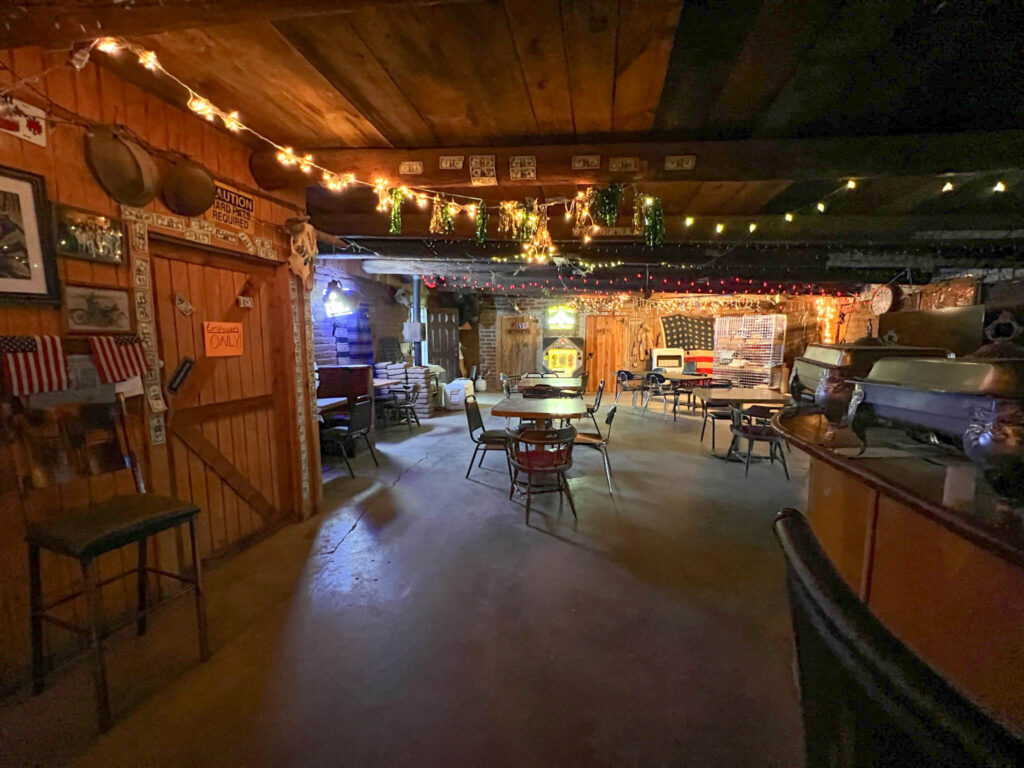
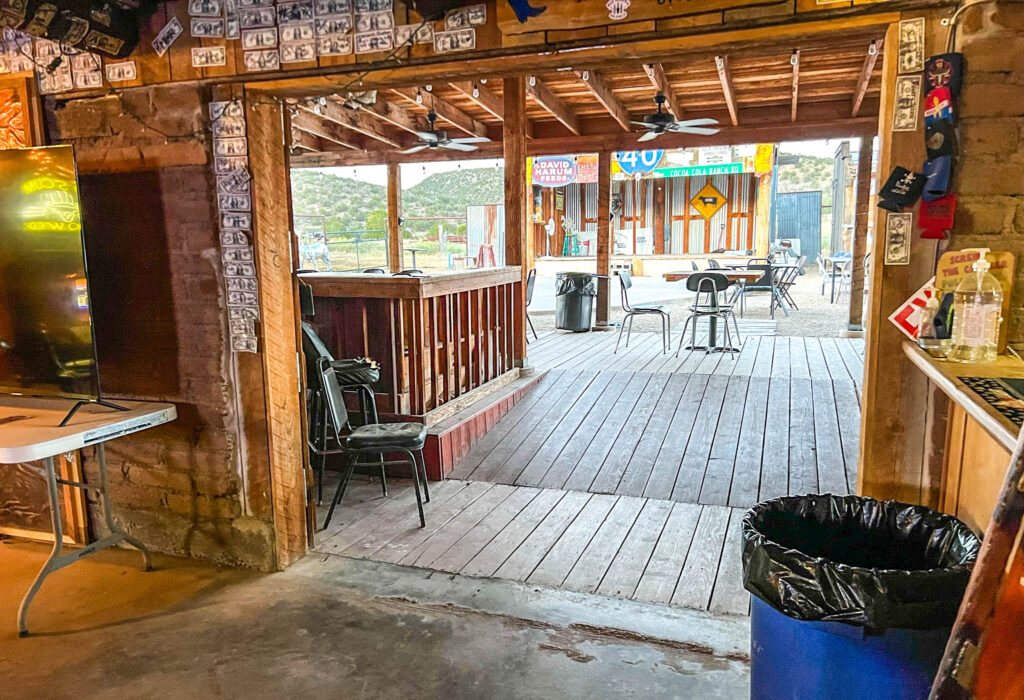
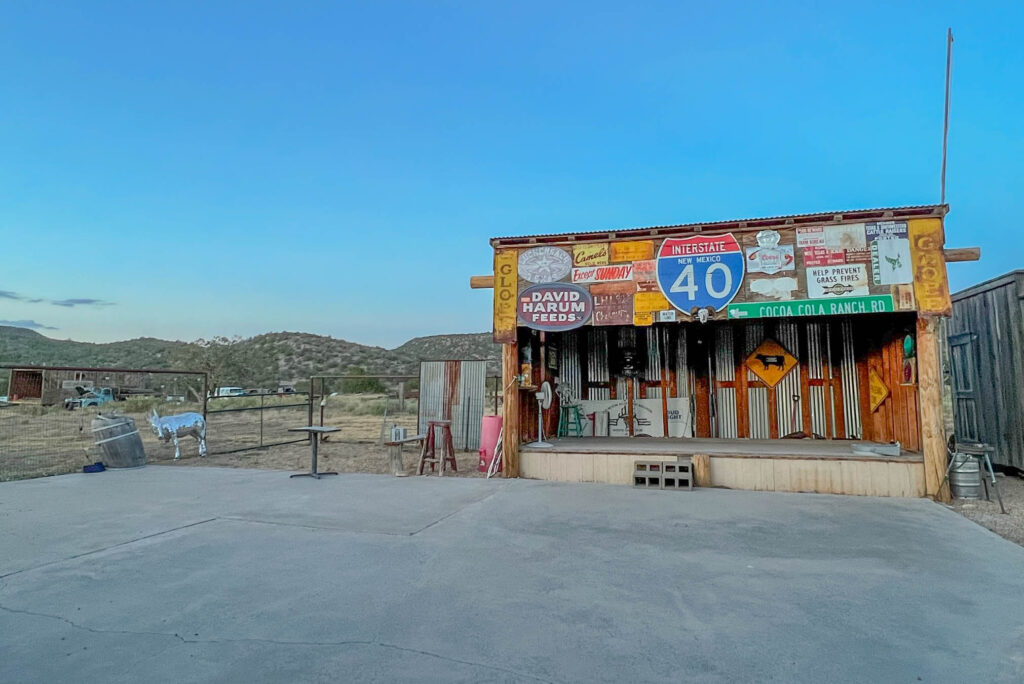
The Annual White Oaks Miner’s Day Festival
Origin of White Oaks Miner’s Day
White Oaks Miner’s Day (which I’ve seen written as “Miner’s Day” on the event Facebook page, and “Miners’ Day” on the schedule … so you get to choose!) started out as a tribute to a beloved member of the community named Dave Jackson. Dave Jackson lived in White Oaks for 61 years, until he died on May 9, 1963, at the age of 94. Arriving in White Oaks in 1897, Dave worked in the mines and eventually became a partner of two of the mines in town. He also helped establish the first electric power plant in Lincoln County, helped bring the first electric lights to Carrizozo, and was also known for teaching Sunday School to the children in White Oaks.
Dave saw many of his friends die over the years. and that inspired him to volunteer to be the caretaker of the Cedarvale Cemetery. In Dave’s words, “Thunderation! Those folks were my personal friends – someone has to take care of them.”
I suppose I didn’t need to clarify that those weren’t my words, as I’m pretty sure I’ve never used “thunderation” in a sentence, and I’m guessing there’s a good chance you’ve never heard of that word either.
The Cedarvale cemetery serves as the burial ground for notable White Oaks figures such as Susan McSween Barber (the “New Mexico Cattle Queen” that I wrote about above) and William C. McDonald, who became the first governor after New Mexico officially became a State on January 6, 1912. Of course, Dave is now buried there too, along with his equally beloved wife.

The town of White Oaks held an annual event known as “Dave Jackson Day” to pay tribute to David’s concern for others and for all that he did for the community. Several years ago, this event morphed into the annual White Oaks Miner’s Day event.
Attending White Oaks Miner’s Day
The Miner’s Day Parade
The morning after my visit to the No Scum Allowed Saloon, I woke up early to do a quick hike at Valley of Fires State Park in Carrizozo, New Mexico, before driving to White Oaks to see what the Miner’s Day festival is all about. As soon as I parked my car along the side of the road at 10am, I could see the parade starting in the distance.
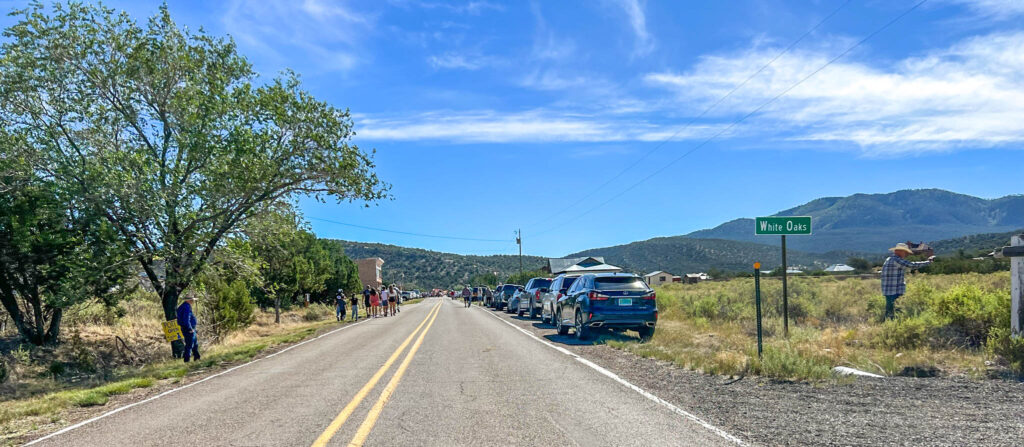
I quickly hopped out of my car and walked up the road to get some photos. I recognized quite a few people in the parade from my previous night out at the No Scum Allowed Saloon, and a few of them even recognized me and said hello. Life in a small town.
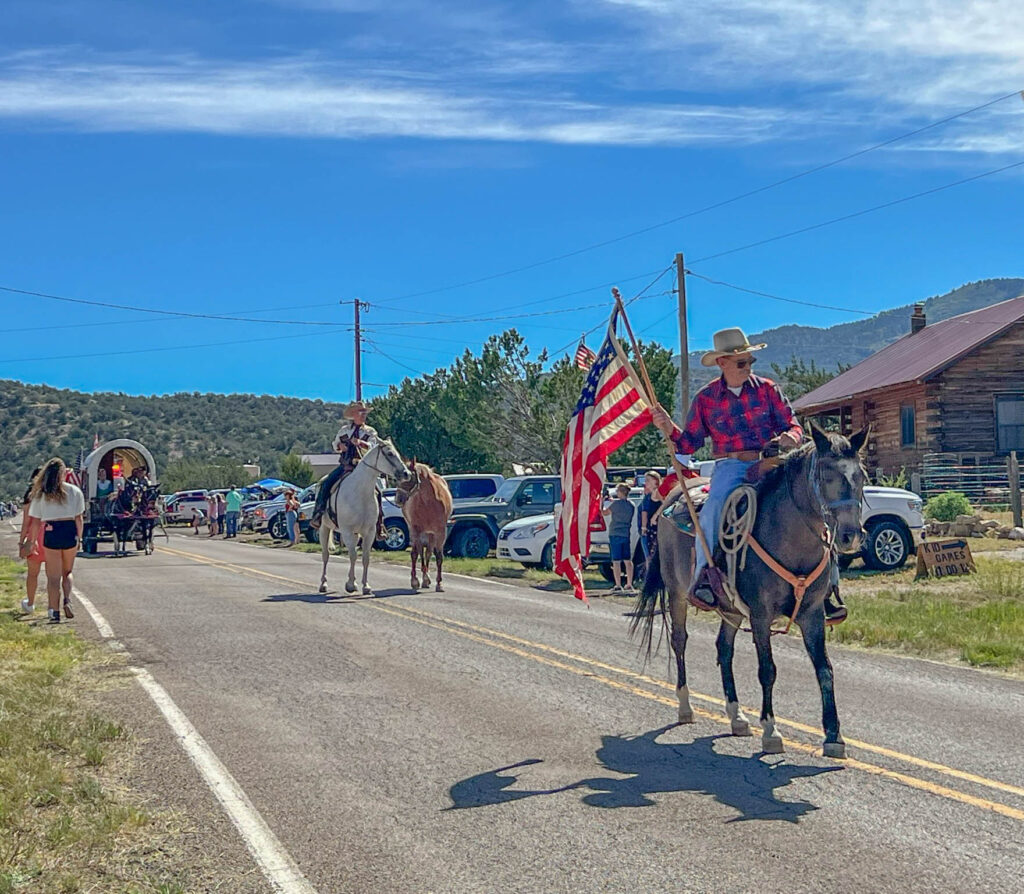
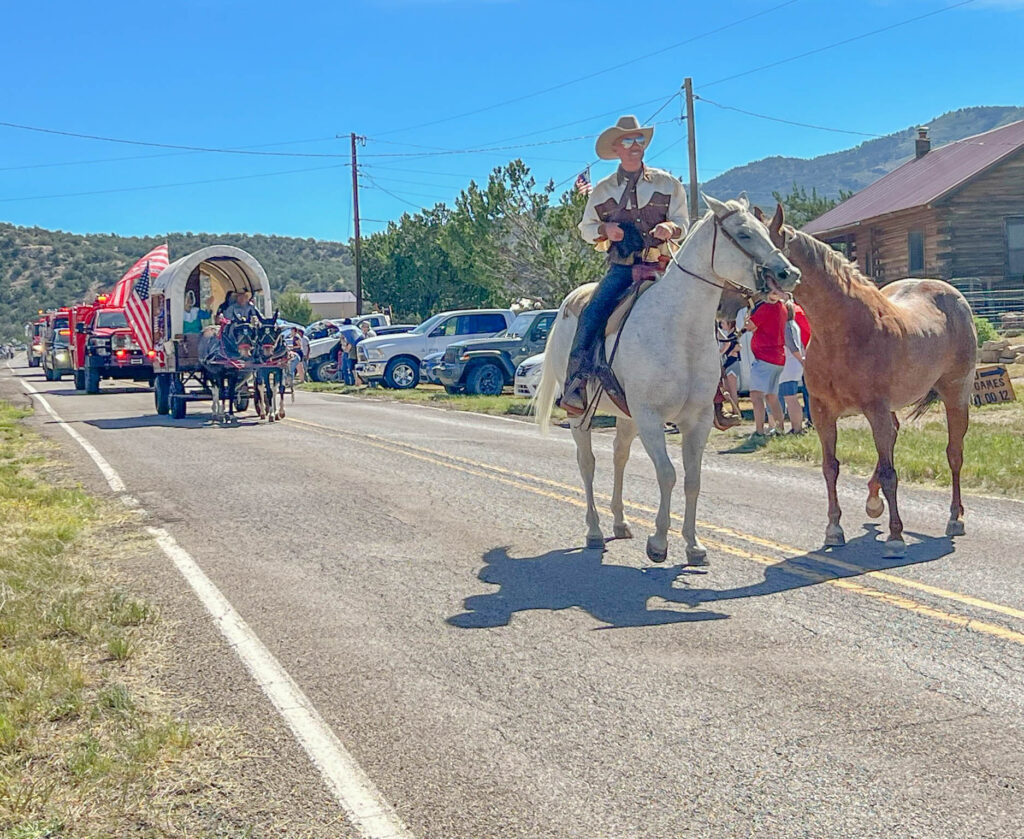
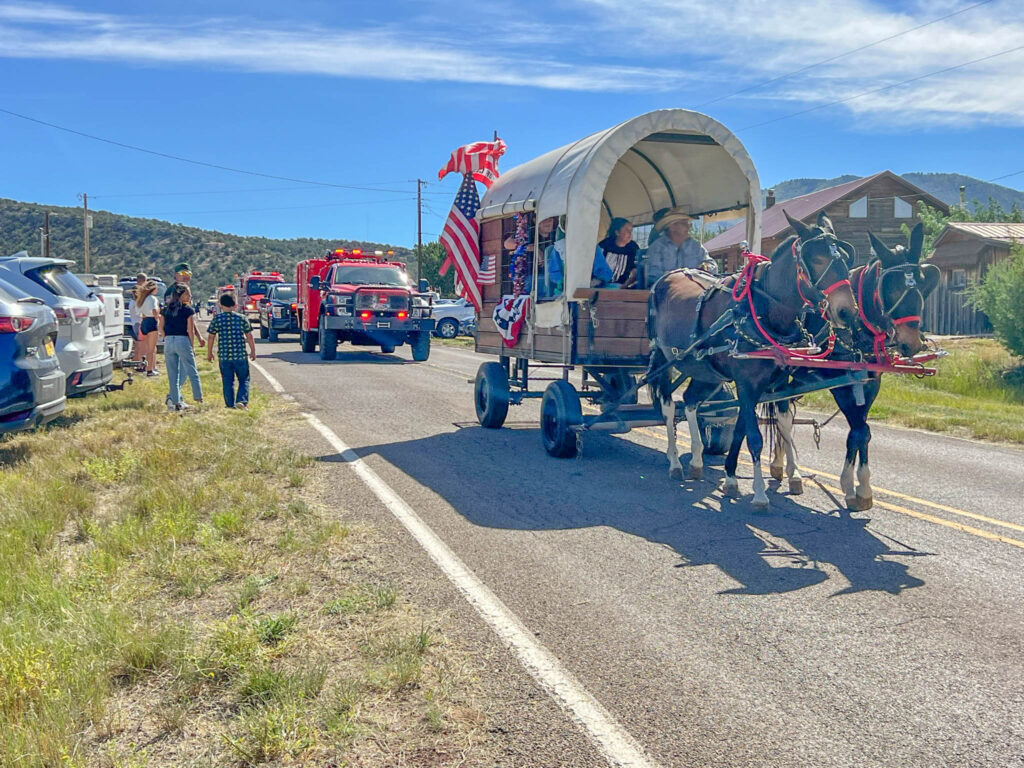
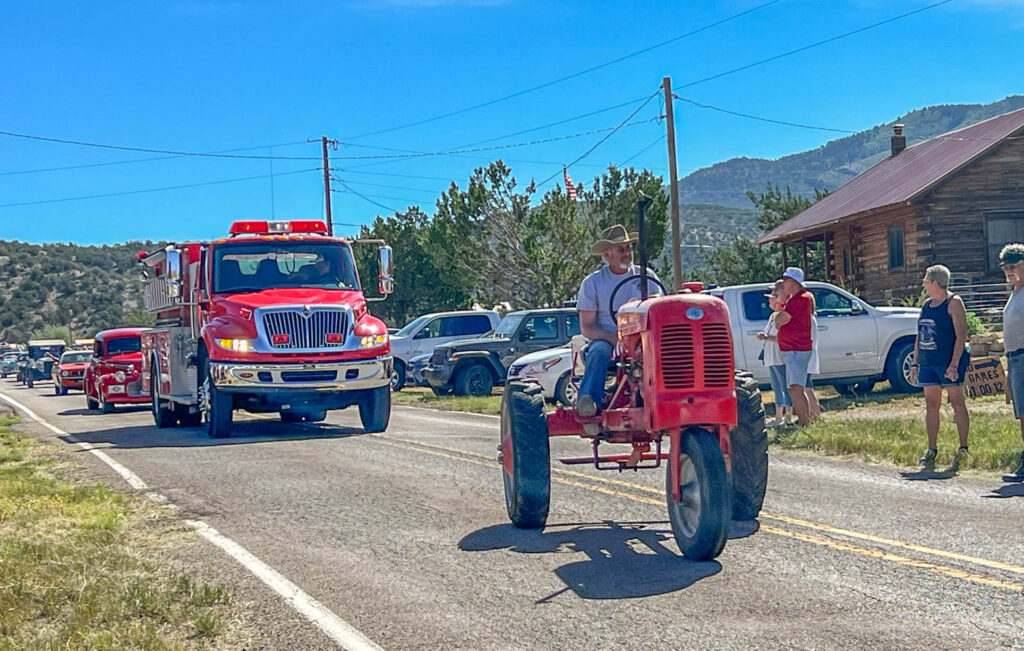
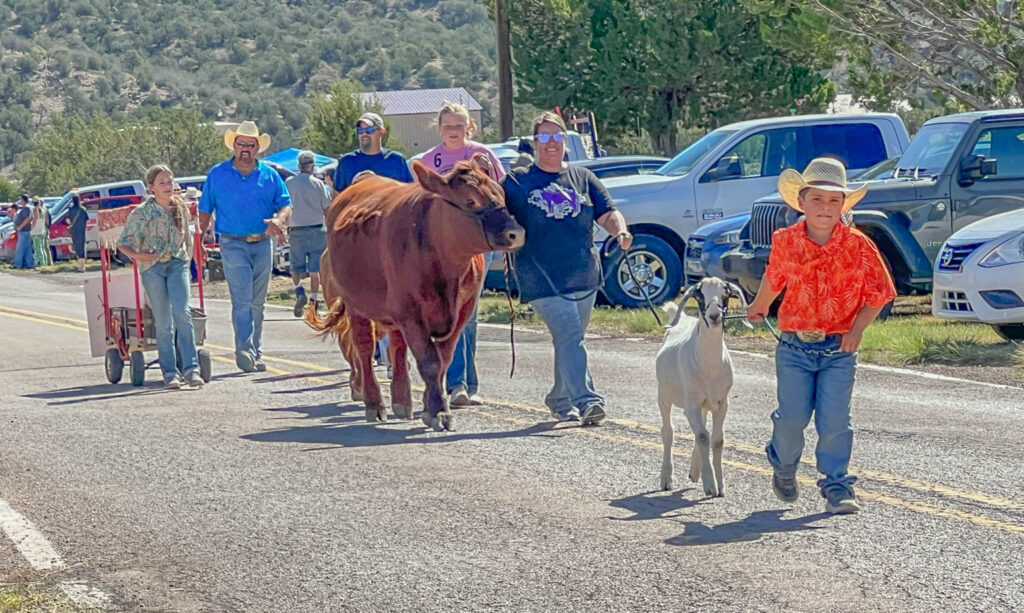
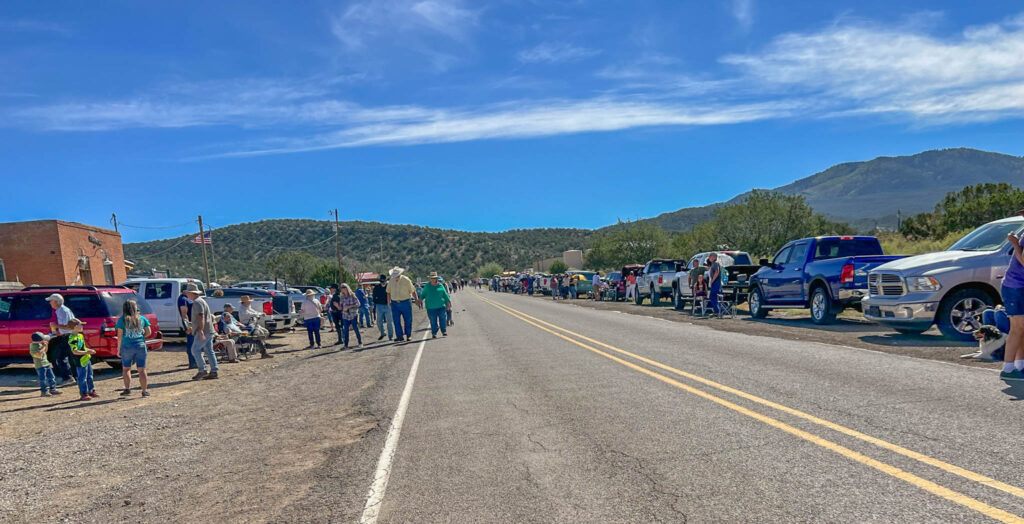

White Oaks Schoolhouse Museum
After the parade, I decided to visit the White Oaks Schoolhouse Museum, as I heard there was some live music there. By the time I got to the school house, most of the seats were full and the band called Countrified was well under way. I listened to a few tunes and then went upstairs to tour the old school. Like many of the buildings in White Oaks, its architecture was influenced by easterners, so the buildings are bit different than what you’ll find in many of the other old towns in New Mexico. I should also mention that the school is solely a museum today, not a functioning school.
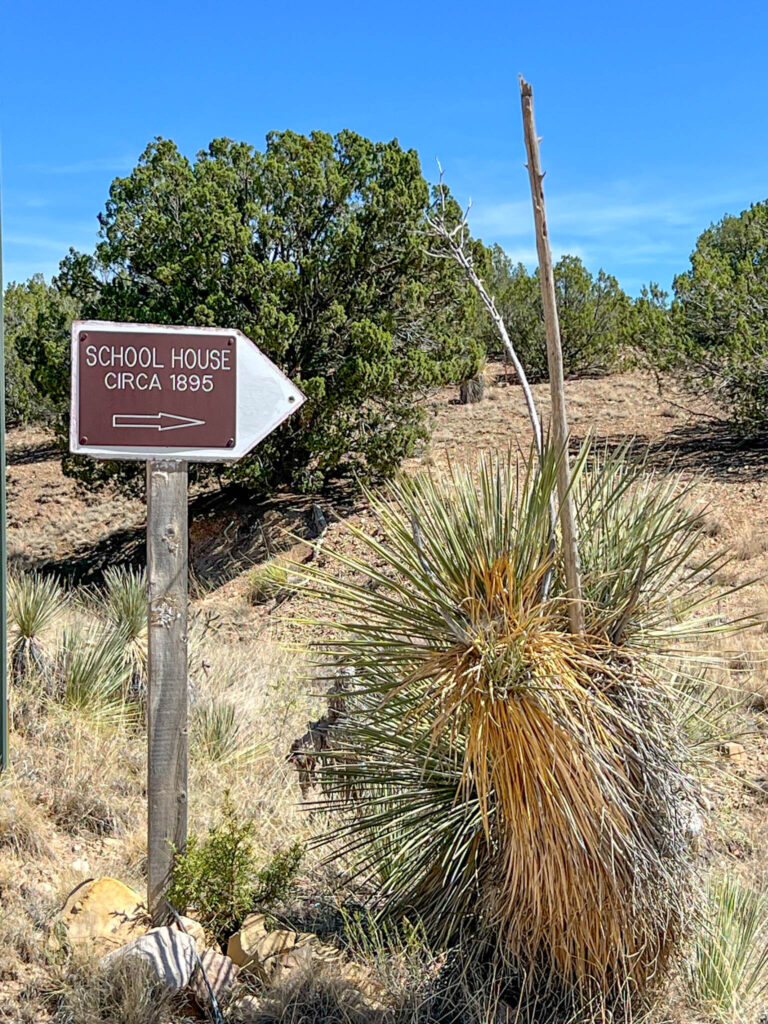
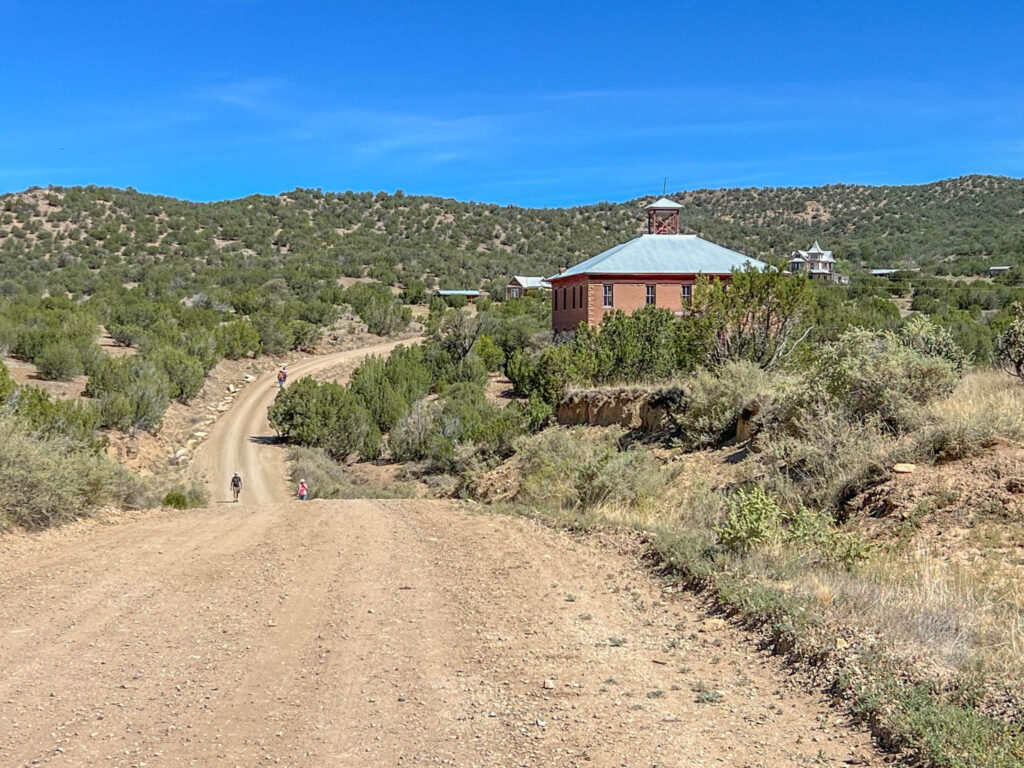
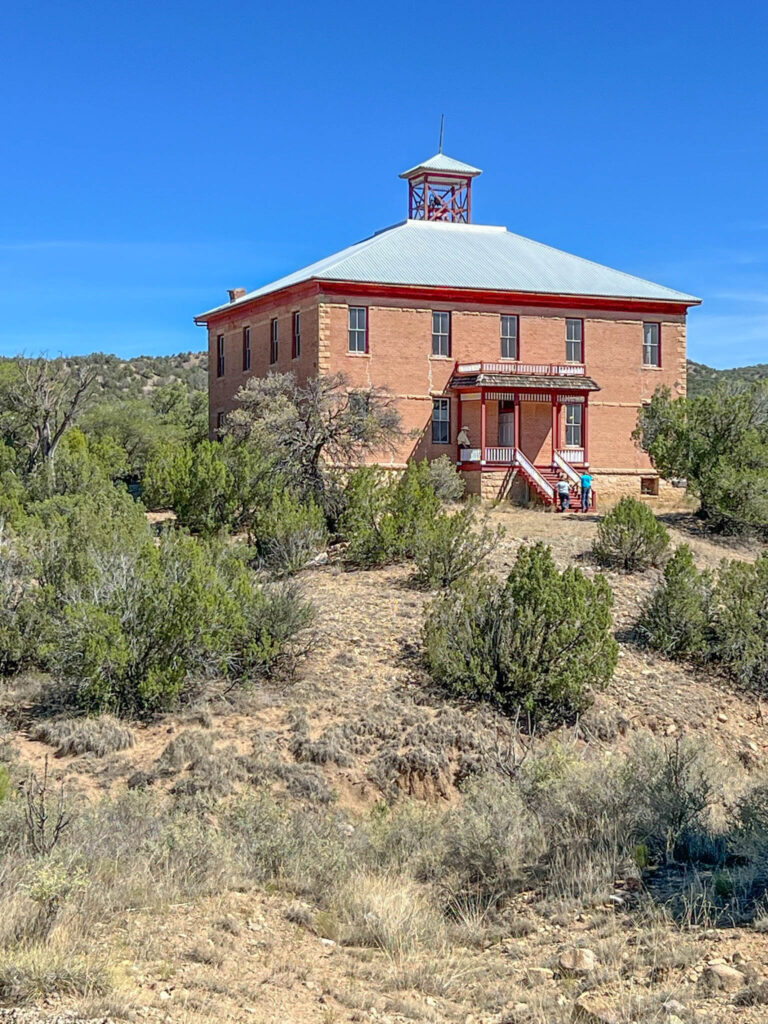
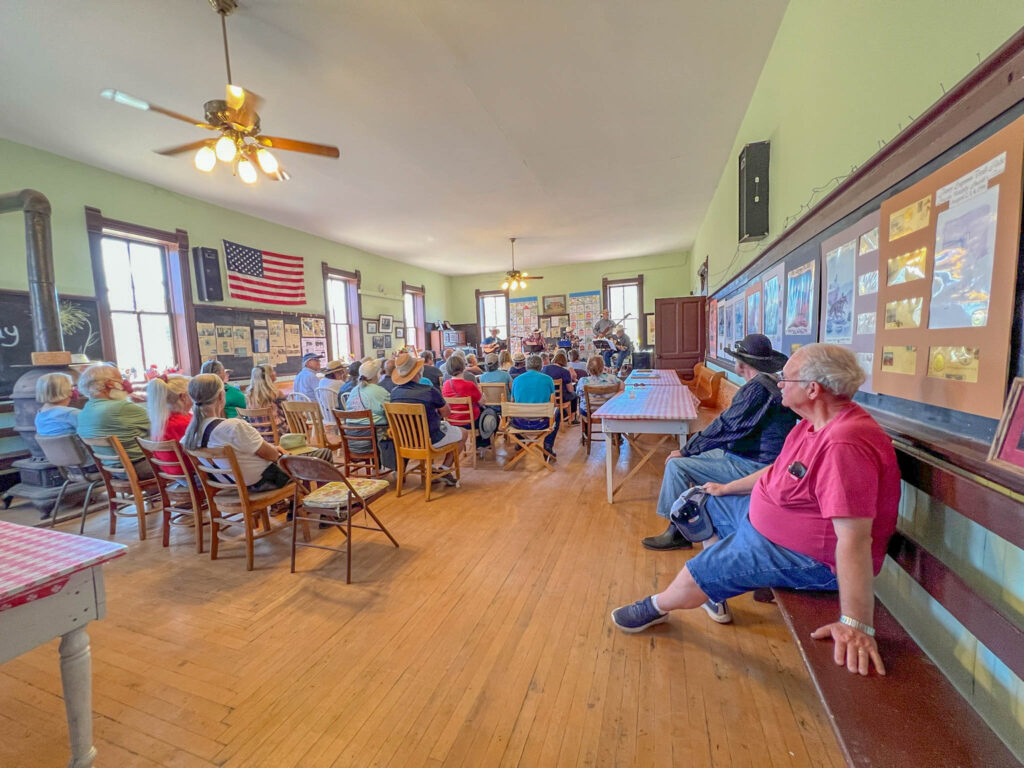
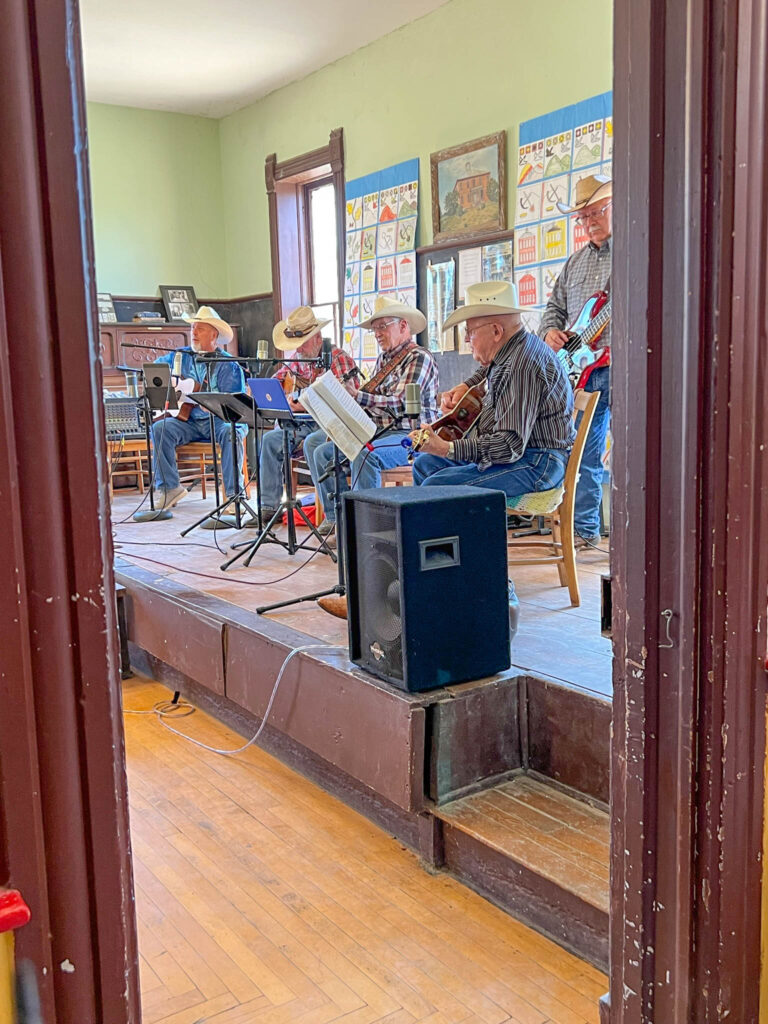
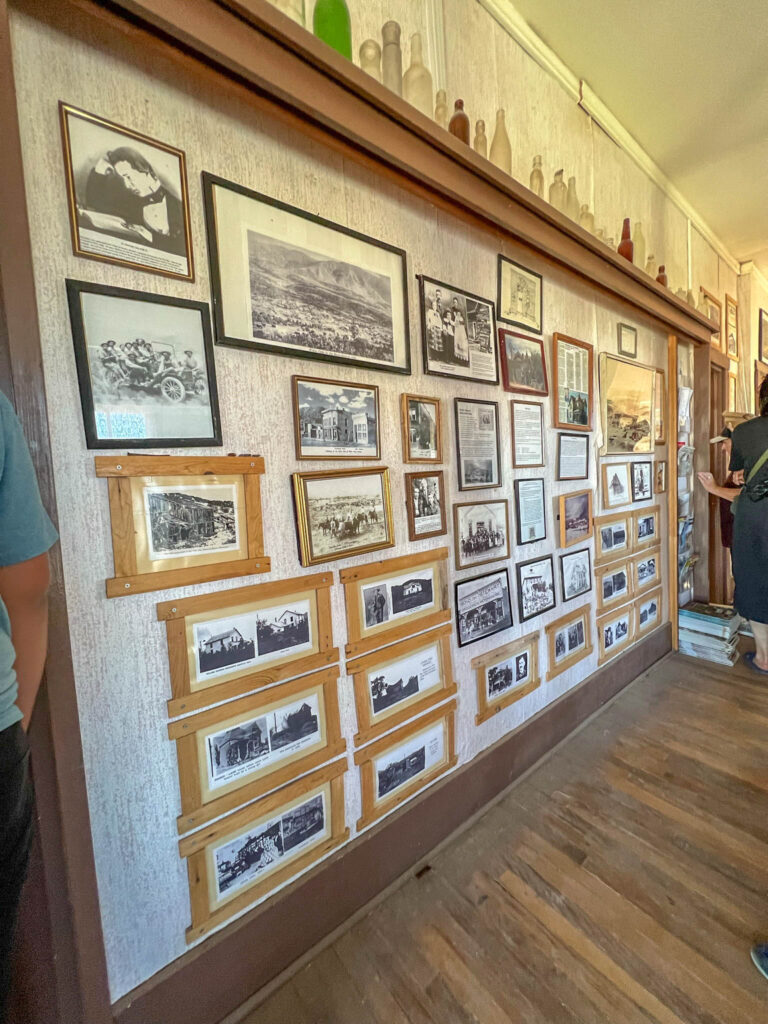
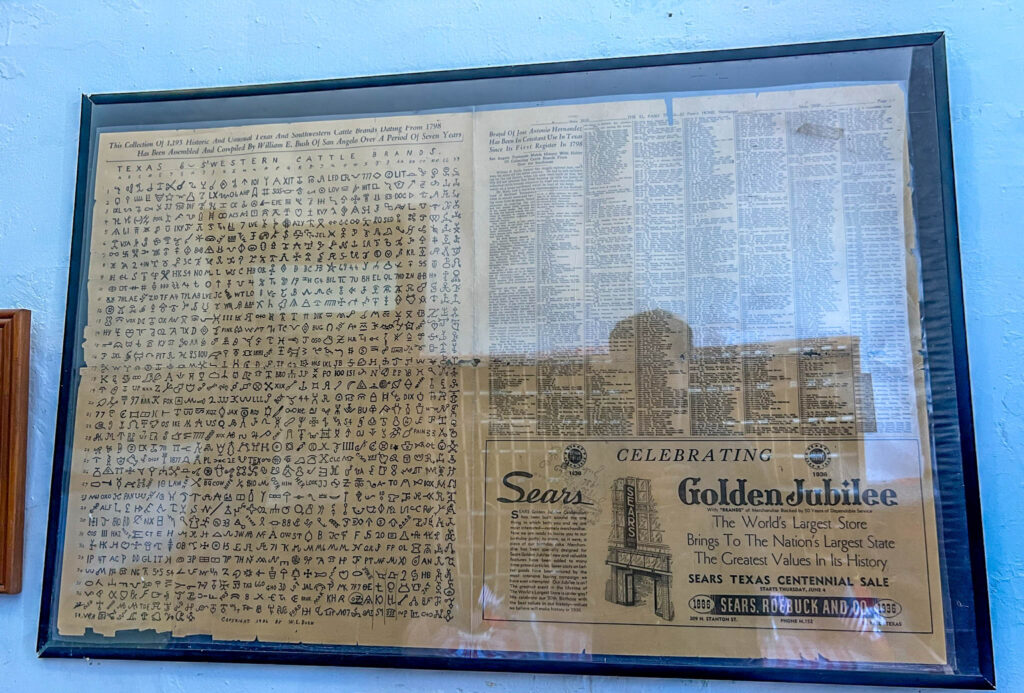
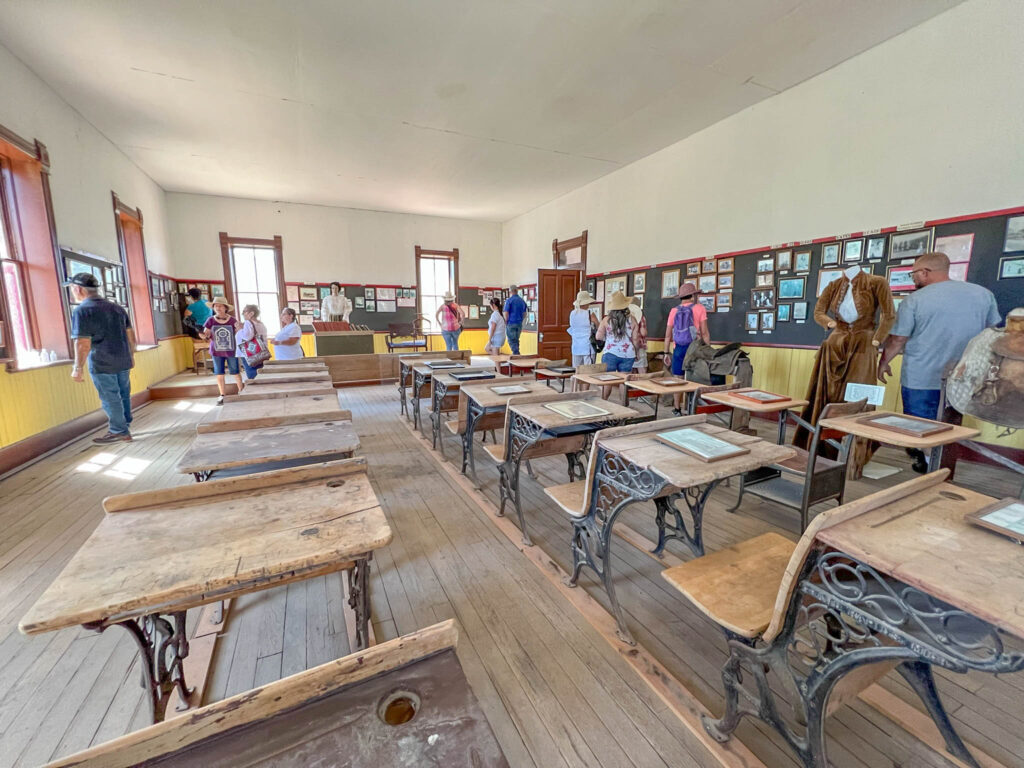
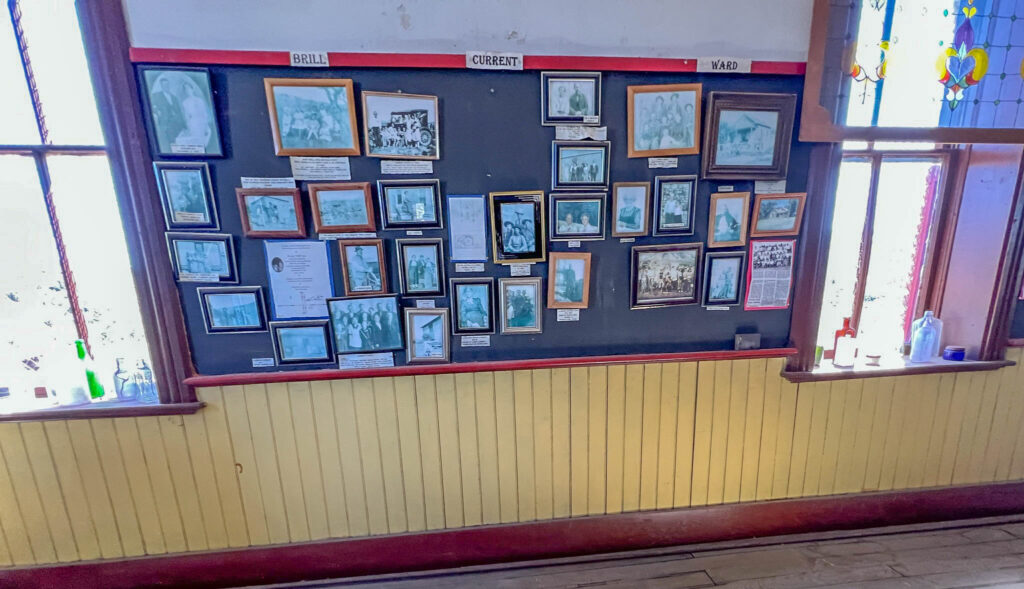
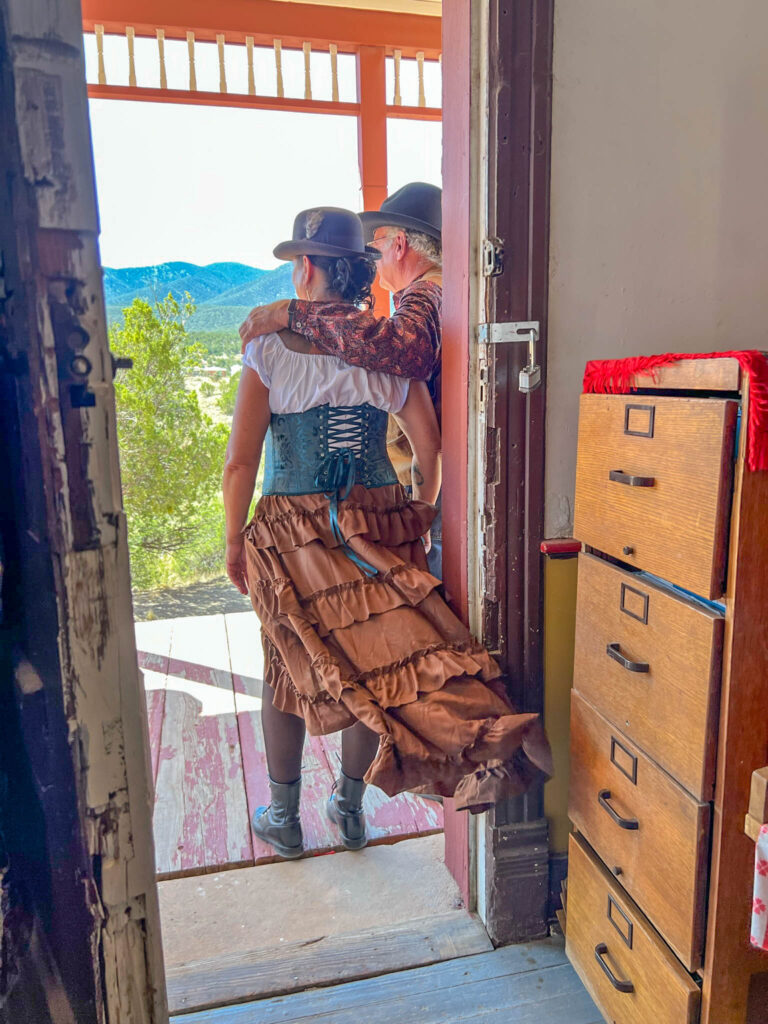
Live music and other Miner’s Day attractions
After visiting the schoolhouse museum, I walked around the main road to see what else was going on, and here’s some of what I found.
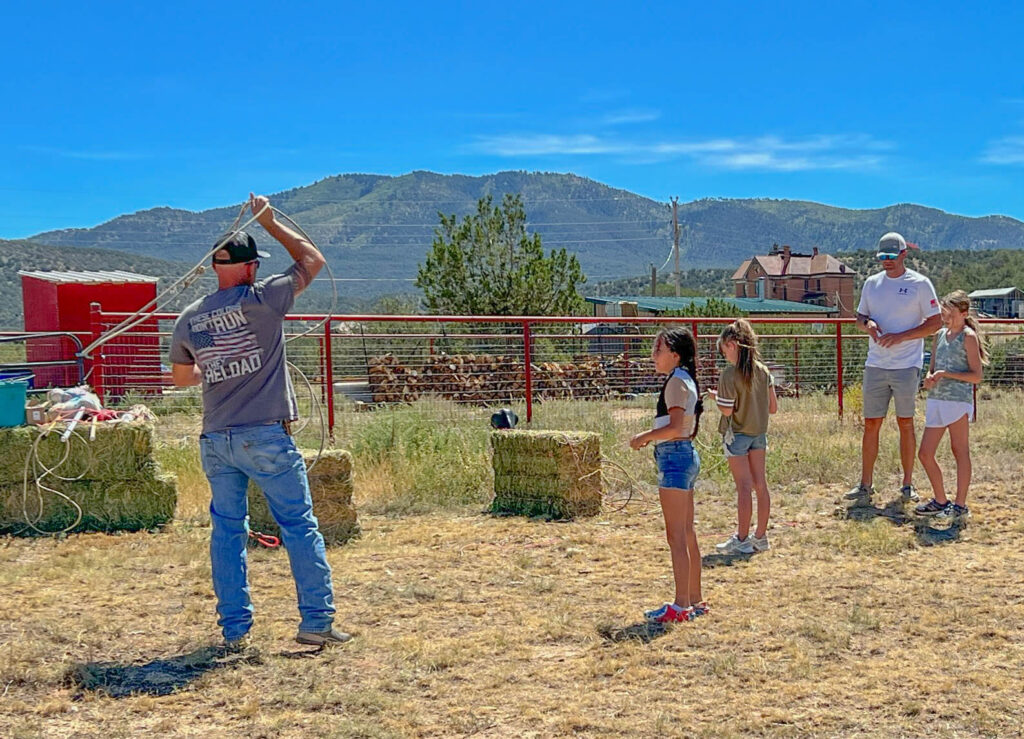
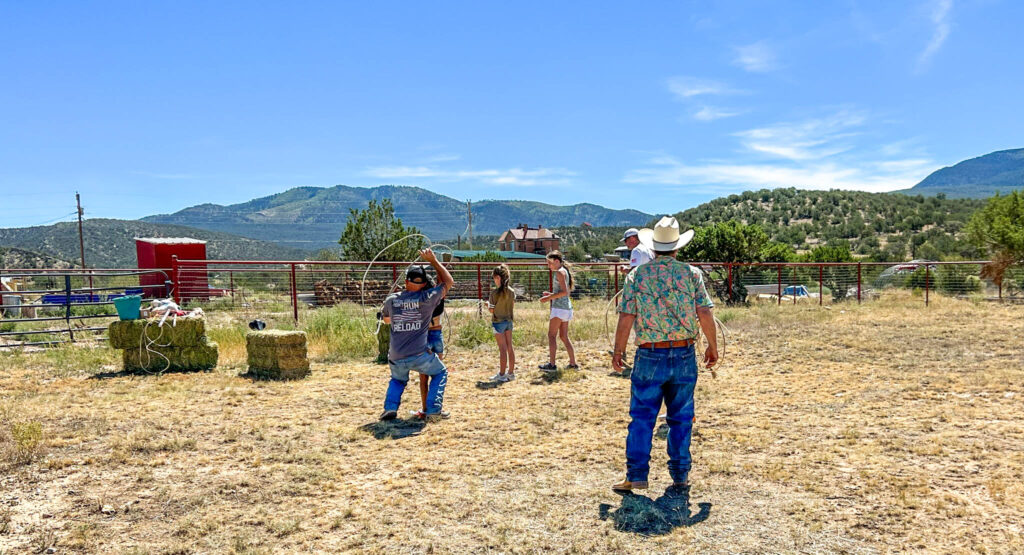
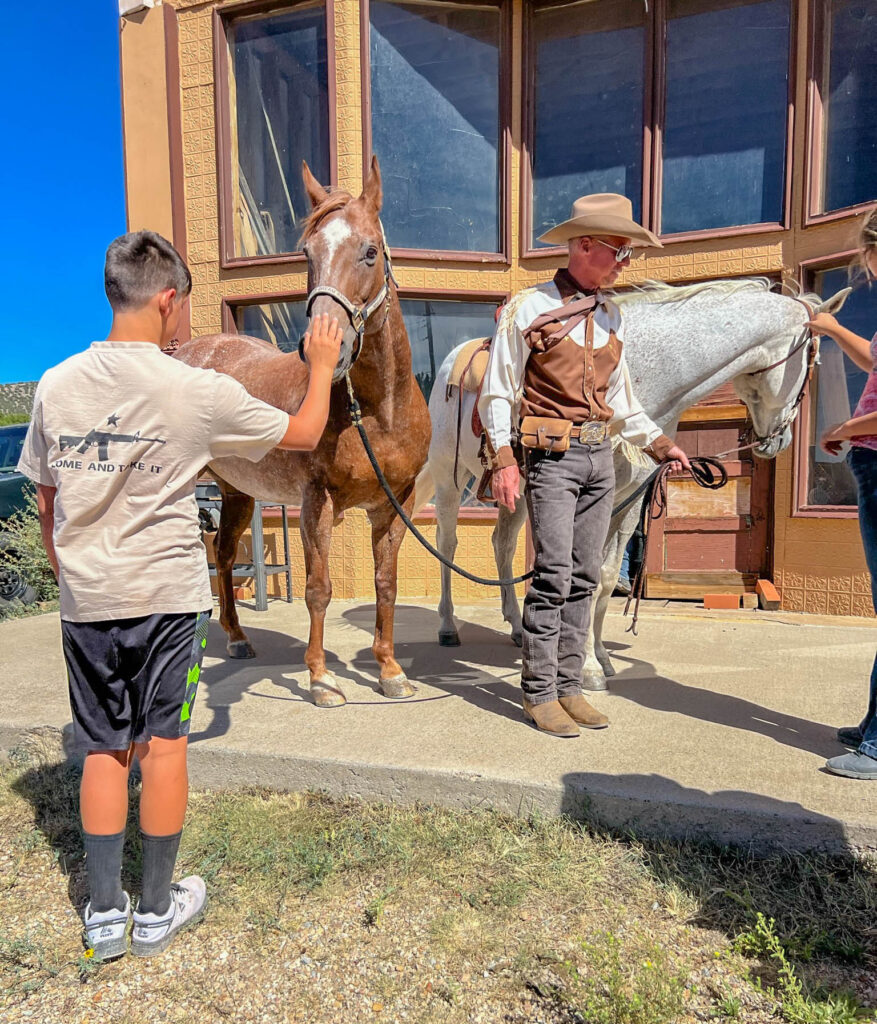
I’m guessing the two T-shirts in the photos above, “Come and Take It” and “These colors don’t run, they reload” aren’t hot sellers in Santa Fe. But that’s one of the things I like most about New Mexico, a wide variety of people and perspectives.
Along the way, I also paid a visit to the White Oaks Veterans Memorial.
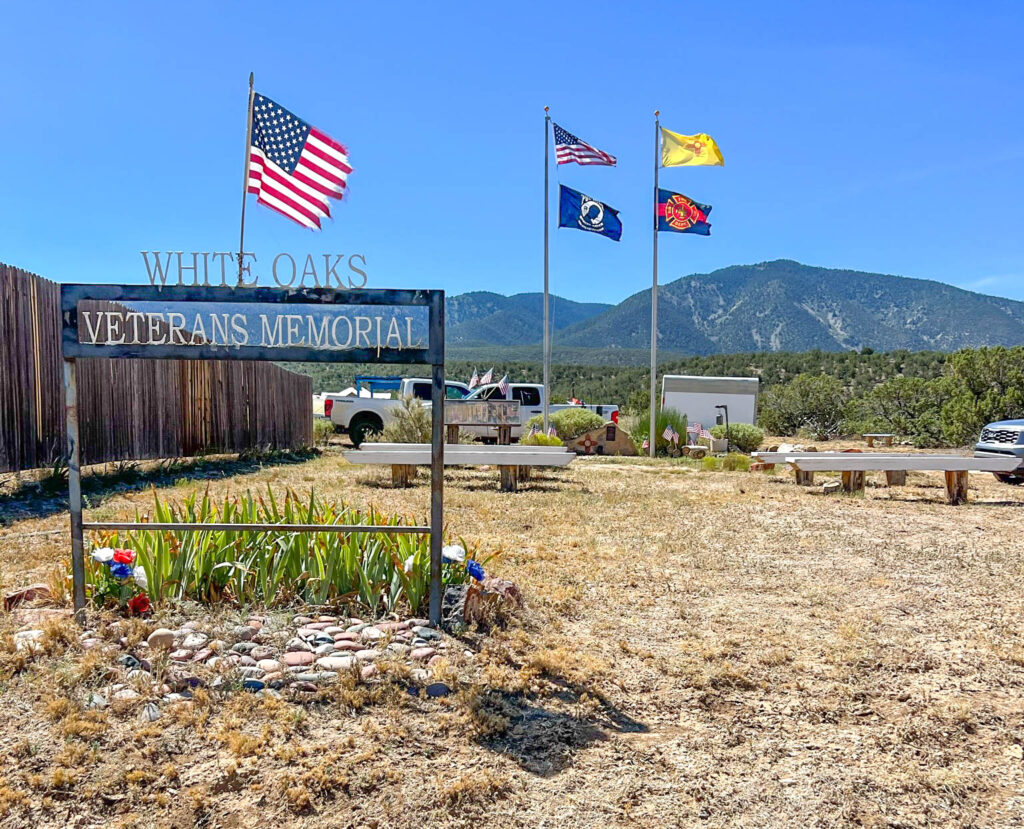
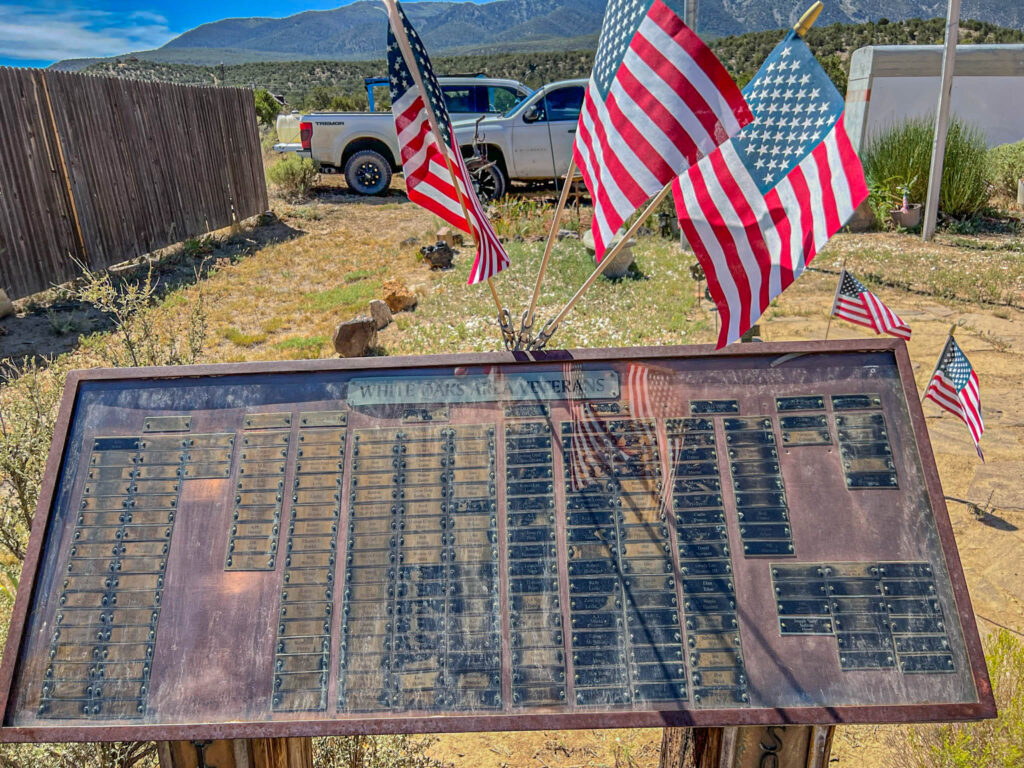
Hoyle’s Folly
Watt Hoyle was a co-owner of one of the largest mines in White Oaks known as the Old Abe Mine. With his newfound riches, Watt decided to build a two-story Victorian mansion for his fiancée back home in Ohio. The home was estimated to cost between $40,000 – $70,000 when it was constructed back in 1887, which is equivalent to over $2 million today. Apparently, Watt thought such a lavish home would seal the deal with his fiancée. However, when his fiancée came out to White Oaks to live with him, she found the area to be too rugged and told Watt that she wouldn’t be staying there with him. She left and Watt never saw her again. Ouch. Heartbroken, Watt never finished the interior of his mansion, which became known as “Hoyle’s folly”. After living there for a few more years with his older brother and his brother’s wife, Watt decided to sell the house and move to Denver.

More live music at the saloon and along the street
About this time, the No Scum Allowed Saloon opened its doors to more than a few thirsty visitors who’d been eagerly waiting for that moment. And thirty minutes after that, the live music began.
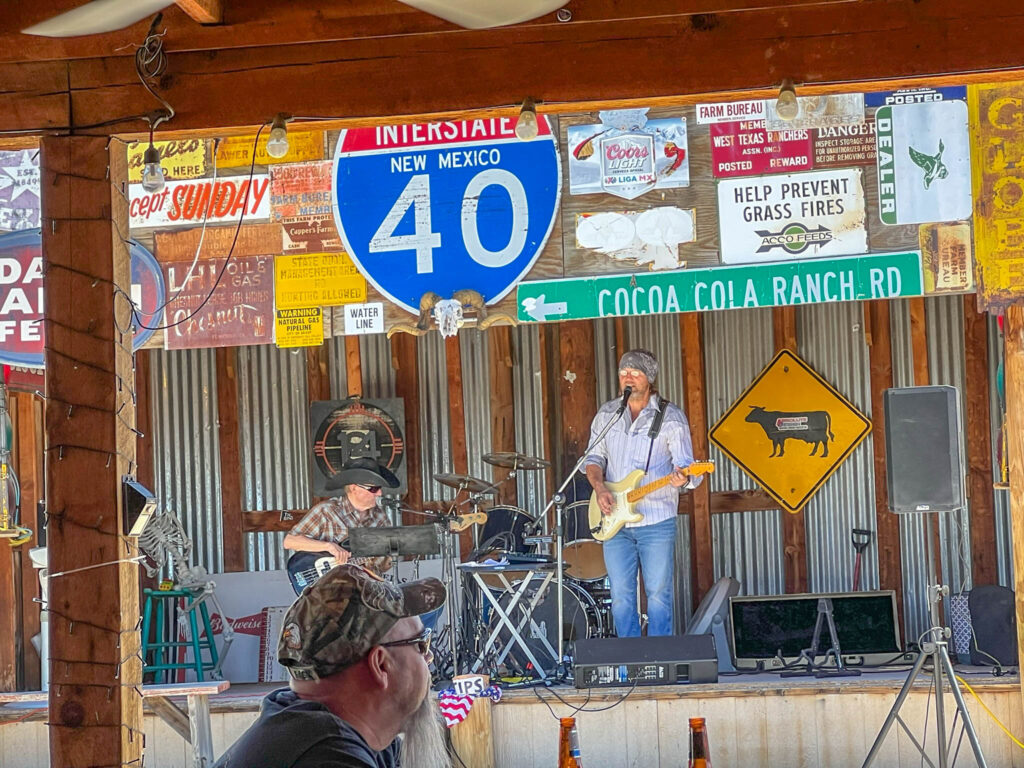
After staying for a few songs, it was time for me to hit the road. On my way back to my car, I came across more live music. This time, in the form of a Brass Quintet.
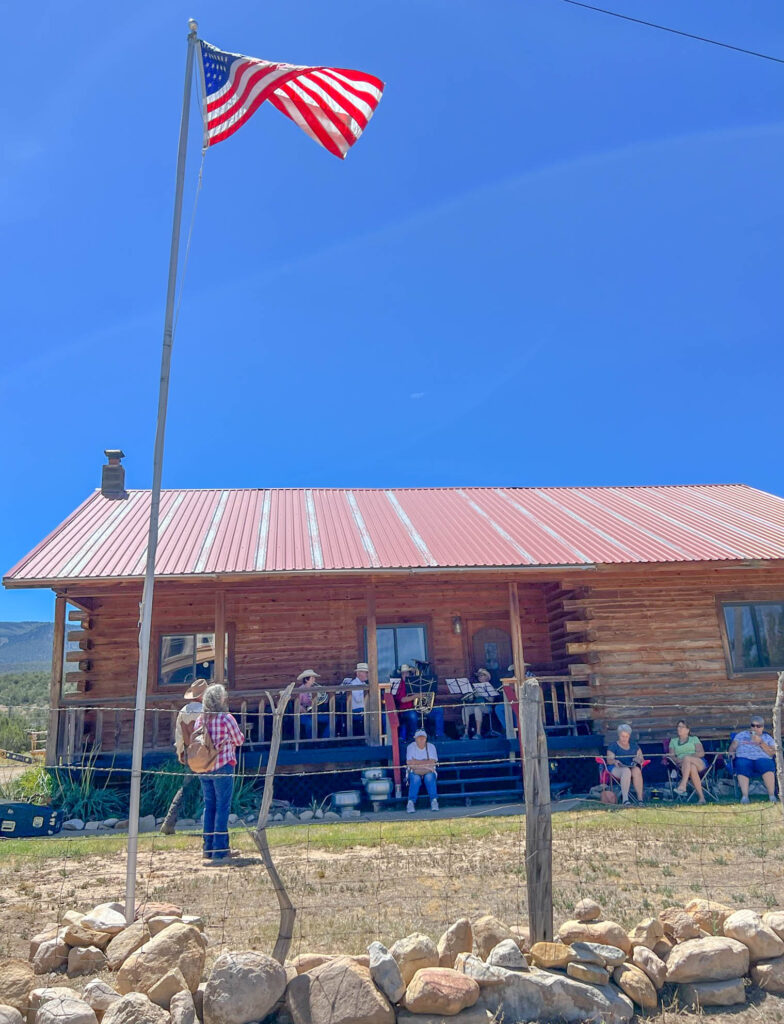
White Oaks Church
I also stopped by the White Oaks Church and took an immediate liking to the greeter, pictured in the second photo below.
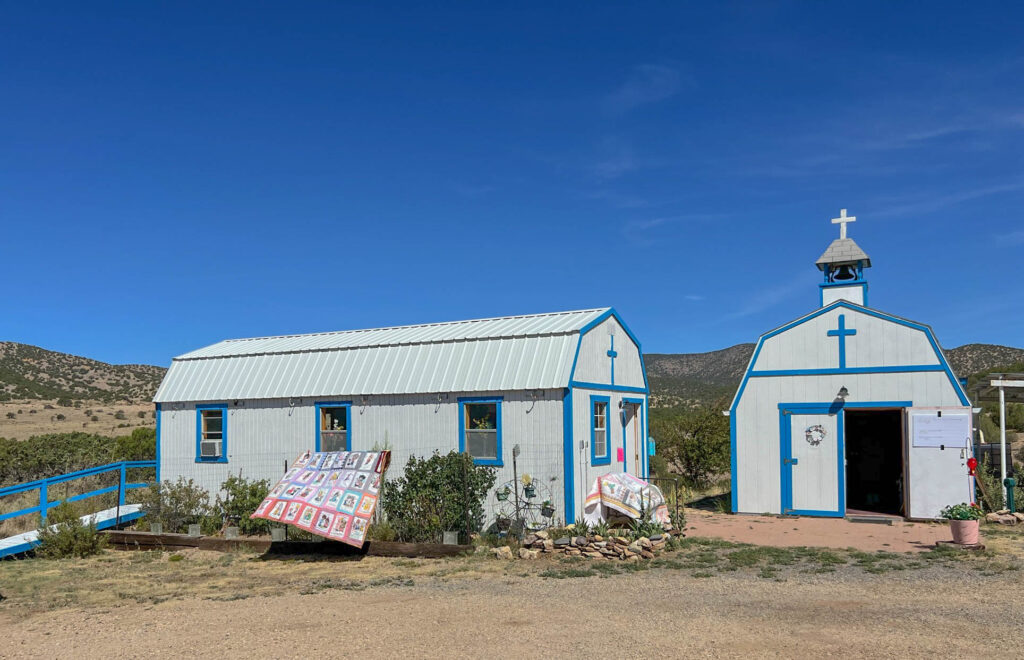
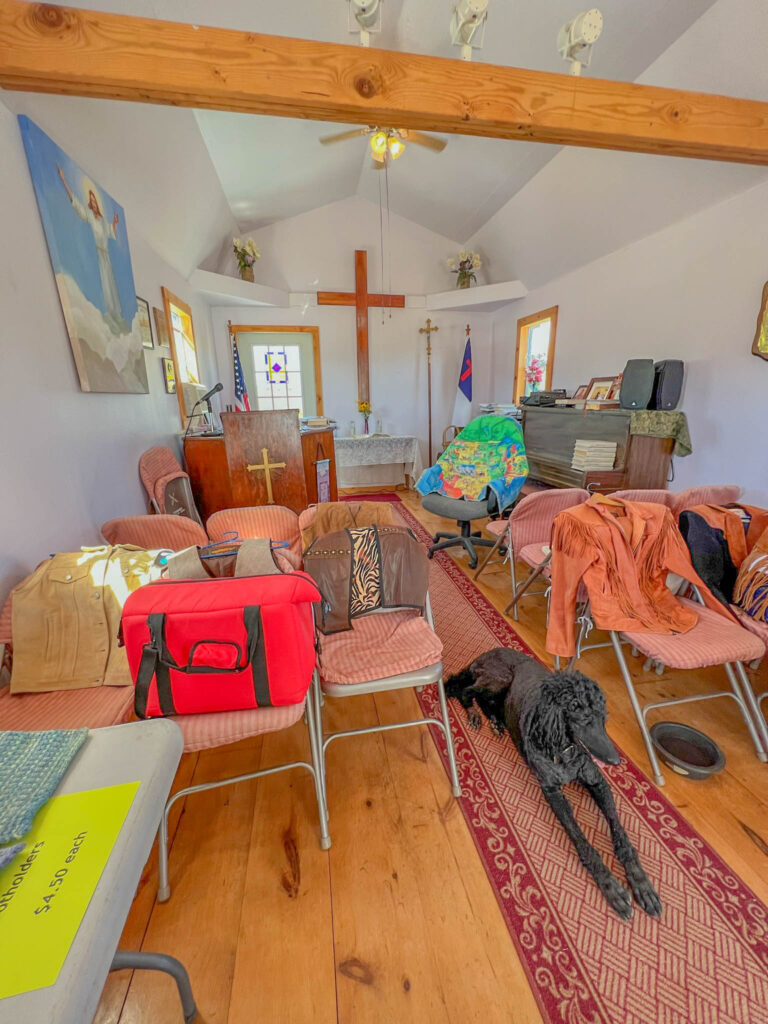
Unfortunately, I had another commitment back in Albuquerque later that day, so I couldn’t stick around for the rest of the festivities. But here’s the full schedule from 2023.

Apparently at noon, you either saw a saloon girl or a gunfight. Welcome to New Mexico, where you never know what you’re going to get. But I do know that I’ll be back to White Oaks again sometime next year.
Next year’s White Oaks Miner’s Day will be on August 17, 2024.
Thought for the Week
In the spirit of the miners who searched for gold in White Oaks, here’s an interesting quote about truth and gold from Leo Tolstoy.
“Truth, like gold, is to be obtained not by its growth, but by washing away from it all that is not gold.”
— Leo Tolstoy
Thanks for reading and happy travels!
Mark (The New Mexico Travel Guy)

Mark Aspelin, The New Mexico Travel Guy (www.newmexicotravelguy.com), is a travel writer and author of two books who has enjoyed a wide variety of adventures in his travels to over 100 countries and all 50 U.S. States. His current project involves visiting EVERY town in his home state of New Mexico (there’s over 500 towns) and writing a story about each one. He’s on track to finish the project by his early-mid 100s. When not traveling, Mark lives as a recluse in the mountains outside of Albuquerque, New Mexico.

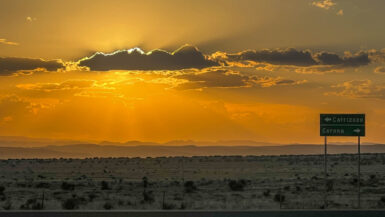
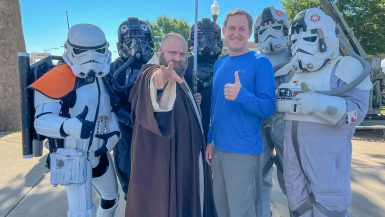
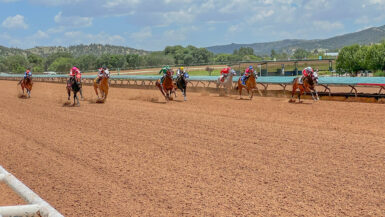
I am Wanting information on miners day festival, booth places and cost , also dates for this year’s event
Thank you Carol Wells
Hi Carol, thanks for your note! White Oaks Miners Day will take place this year on August 17, 2024. I’m not affiliated with the event, so I encourage you to reach out directly to the event coordinator at [email protected]. You can also find additional information on the event’s Facebook page at https://www.facebook.com/p/White-Oaks-Miners-Day-100083773480023/
Thanks for your interest and enjoy the event! Mark